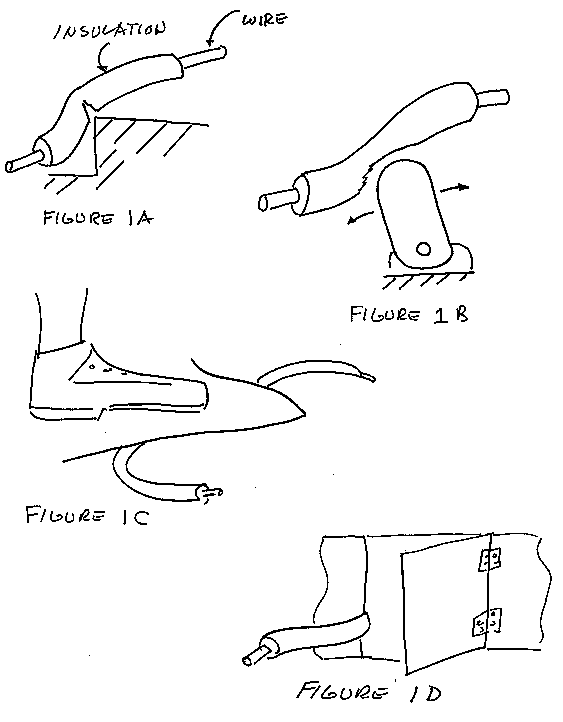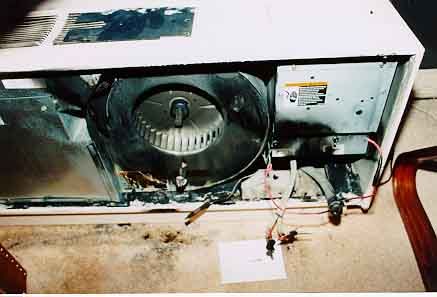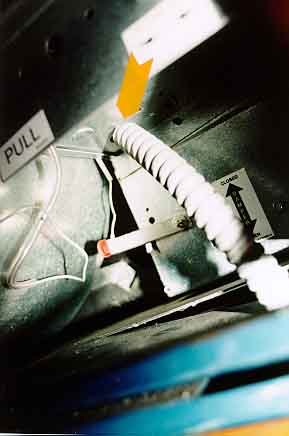

FIGURE 2
Figure 2 is a view of a heating unit in a high rise building that suddenly started generating smoke. After the fire department had left, claims investigation began with the heating unit and associated wiring. There was severe faulting of the power cable in the vicinity of a metallic enclosure inside the unit. Figure 3 is a view of the faulted power wire that had been removed from a flexible metallic conduit. Burn patterns confirmed that the electrical fault was the likely cause of the fire. In the apartment there were two additional identical units, certainly a fortuitous find since comparison with an exemplar usually aids in the investigation. Figure 4 is a view of the power wiring of the exemplar showing the flexible metal conduit with the power wiring entering a metallic enclosure. Surprisingly, none of the other units in the apartment were equipped with a connector to connect the flexible metal conduit to the enclosure. The flexible metal conduit was unrestrained, relying on the wire to support it at the entry into the enclosure. The enclosure was constructed of a thin gauge of galvanized steel with sharp edges at the knockouts. The power wire rested against the sharp edge supporting the flexible cable. During heater operation, fan vibration caused the flexible metal conduit to oscillate, resulting in severe chafing of the wiring. Wires in the exemplar units were in various stages of chafing and on their way to eventual failure. This installation was deficient in that a connector should have been installed to stabilize the wiring and act as a protector from vibration and chafing.

FIGURE 3

FIGURE 4
Identification of the chafing failure mode obviously depends on the quality of the evidentiary remains. Usually the cause of failure is installation related such as improper securing of wires or lack of hardware. Sometimes a design deficiency arises through improper selection of wire insulation. There are various grades of wire insulation, some of which are chafing resistant. A review of the quality of wiring used in an installation may demonstrate that substandard wire insulation was the ultimate cause of the failure.
FOR TECHNICAL ARTICLES CONTACT CLAIMS MAGAZINE AND ASK
FOR A REPRINT OF A PAST TECHNICAL NOTEBOOK ARTICLE
CLAIMS MAGAZINE
BACK TO C. ROBERTS CONSULTING ENGINEERS HOME PAGE,
WWW.CROBERTS.COM
WWW.CROBERTS.COM